Resilience

Program Overview
How are we making Martin County more resilient? On Wednesday, June 17, 2020, Martin County Coastal Management staff hosted two Facebook Live events to discuss our Resilient Martin Program. You can re-watch the presentation here. This Martin County initiative will help you understand the future risks of sea-level rise and what we’re doing to mitigate them.
Story Map
In our Resilient Martin Story Map, we will discuss some of the ways Martin County is planning for future conditions and risks, by identifying the most effective and fiscally responsible responses to Sea Level Rise. This map provides an interactive view of the county showing the potential Sea Level Rise conditions of 2070.

WHAT IS RESILIENCE?
Community Resilience is the ability to adapt to changing conditions, including acute shocks and chronic stresses. Acute shocks are emergencies that cause sudden disruptions in services and include things like severe hurricanes, heat waves, wildfires, and infrastructure failures.
However, chronic stresses weaken the fabric of a community over time while also negatively impacting the fiscal efficiency of local governments. Stresses in our region include heavy rainfall and flooding events, rising sea levels and coastal erosion, and exposure of public water supplies vulnerable to saltwater intrusion.
The frequency and intensity of our community’s stresses and shocks will increase as the climate continues to change. Community resilience means spending time and resources to plan for these future shocks and stresses. It is no longer enough to make plans and infrastructure investments based on current conditions alone. By planning for future conditions and risks, we can identify the most effective and fiscally responsible responses. Through resilience planning, Martin County will ensure that these challenges are addressed in current and future actions.
BY THE NUMBERS
OUR RESILIENCE PLAN
Martin County has received grant funding from the Florida Department of Environmental Protection (Grant #CM933 in 2017 and Grant #R1911 in 2019) to perform targeted analyses required to develop a resiliency plan that addresses the impacts of sea level rise.
Grant products from work in 2018 included an initial map series depicting sea level rise for three time frames using three different model projections. More recent work has focused slightly further in the future on 2040, 2070, and 2100 time frames, with increased detail.
The data and maps developed through these grants will allow for the county to develop a resiliency plan that would include mitigation for expected local hazards. Future work may incorporate storm surge and extreme precipitation events to increase the value of these maps.
Please sign up for updates and meeting notifications about the development of our resilience plan.
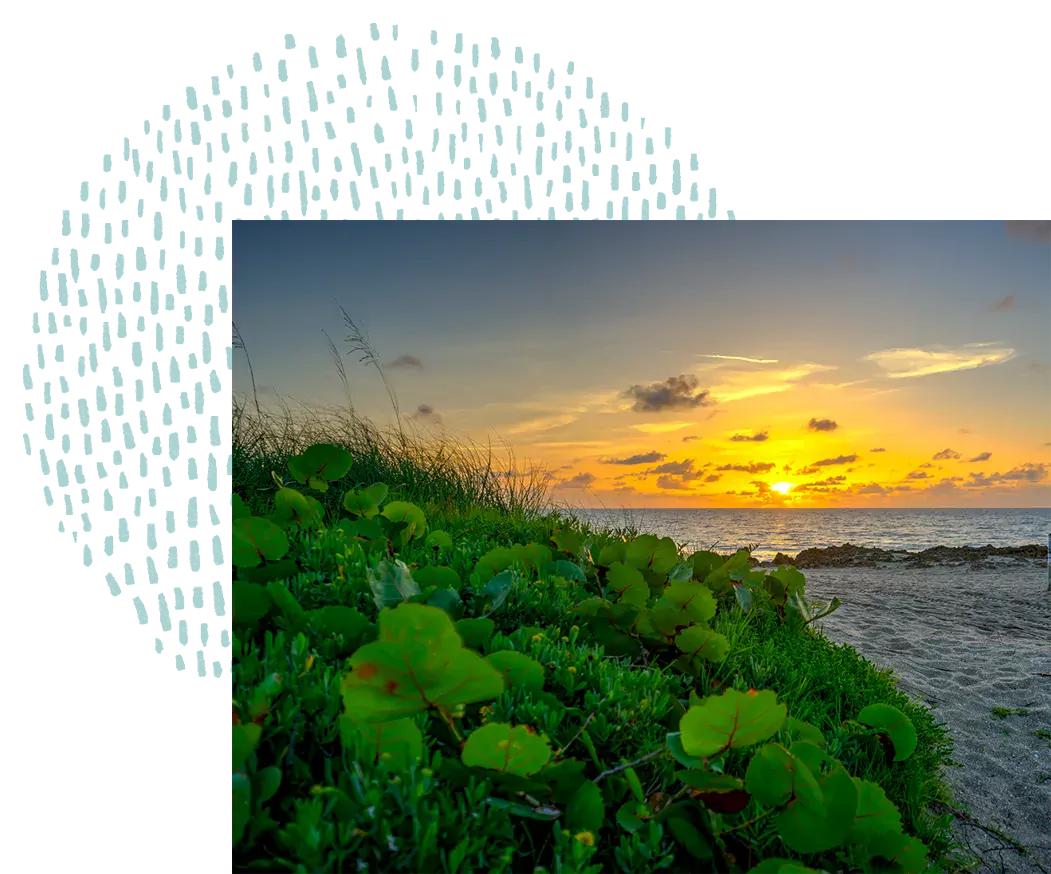
Sea Level Rise Report
The rate at which Martin County residents face impacts from sea level rise is increasing along with the severity of those impacts. The County is developing response plans to address current flooding issues as well as future impacts from predicted sea level rise.
This report provides a brief background on climate change and sea level rise, explains the goals and analysis employed to develop the report and contains examples of both individual sector and overall economic impacts. Recommendations and links to actual work products are also provided in the report.
SLR Vulnerability Map Series
These maps show the potential Sea Level Rise (SLR) in Martin County and the infrastructure that could possibly be impacted at 2070, 2100, and 2100 plus a 100 year storm.
MAPS
NOAA Coastal Flood Exposure Mapper
NOAA's Coastal Flood Exposure Mapper enables users to explore maps that show people, places, and natural resources exposed to coastal flood hazards and create a collection of maps to share and communicate about flood exposure.
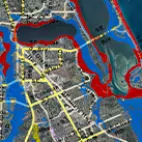
Perform a property search via the county's Flood Zones Map to find out which flood zone your home or property is located in.
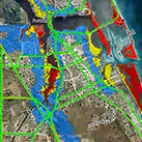
View local areas which may potentially be inundated with storm surge or whose evacuation routes may be impacted by storm surge.
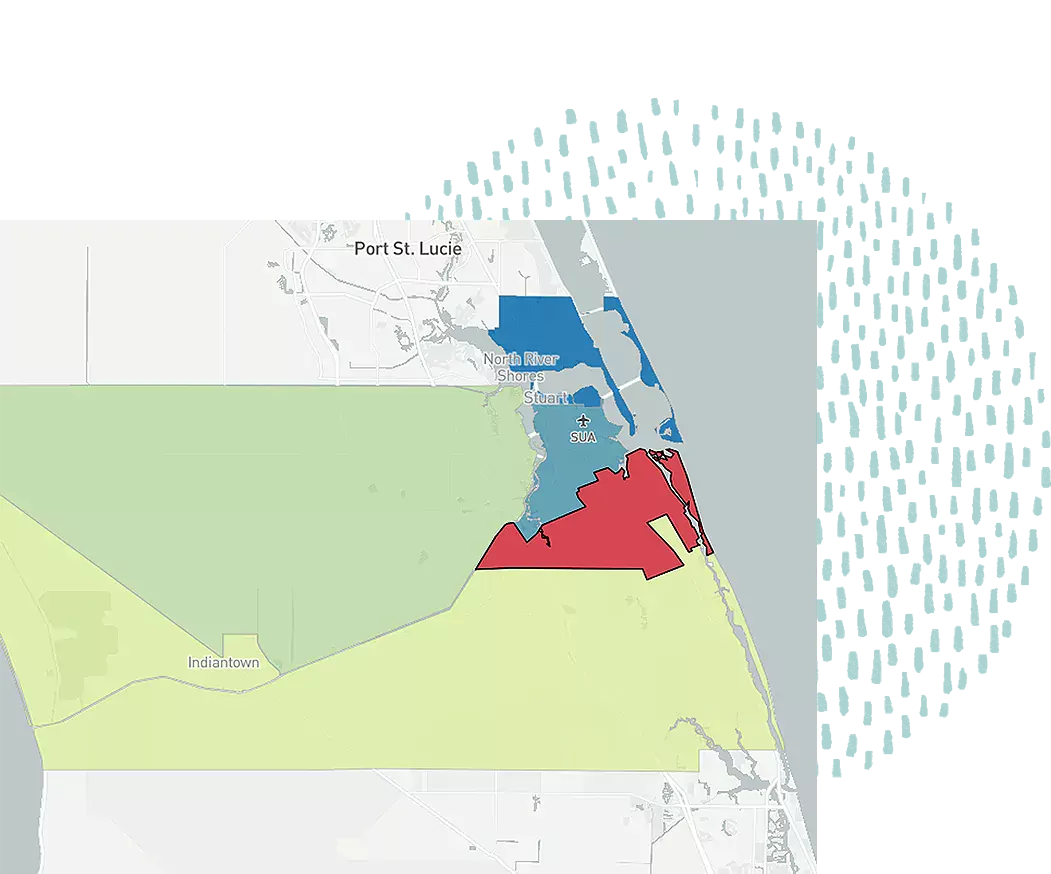
Economic Vulnerability
This economic vulnerability tool summarizes the extent to which Martin County businesses could be impacted by rising sea levels.
The tool allows the user to select various impact categories and forecast periods for 2 different projections, the NOAA Intermediate High and NOAA Higher High water conditions.
Results from various combinations will demonstrate how differing conditions could impact business sectors. Reports can be generated for specific commission districts or for municipalities and for specific industry groups.
WHAT YOU CAN DO
Recognizing that addressing community resilience requires all of us to work together, here are some things you can do to incorporate sustainability best practices into your life.
Conserving energy not only reduces your monthly electric bill, but also reduces carbon emissions into our atmosphere. Take the FPL Home Energy Survey ❯
Protect water resources by visiting the South Florida Water Management District's tips on how to conserve water resources ❯
Visit the county’s Protect Our Paradise website, which serves as a portal for visitors and residents to learn more about environmental conditions, initiatives, sustainable tourism, and issues taking place in Martin County, including ways visitors can help.
Report any illicit discharge, illicit connection to the county's drainage system, pipe failures, construction site runoff, or other stormwater issues which contribute to pollution of our local water bodies. Make a Report ❯
Plastic straws are one of the many single-use plastics that litter beaches, pollute oceans and harm wildlife. Martin County has adopted a single-use plastic reduction strategy and you can help by shopping local vendors that support sustainability practices and incorporating reduction strategies into your everyday routine.
The Florida Department of Environmental Protection encourages Florida residents and visitors to reduce their plastic use and “Skip the Straw.”
For one week, residents, schools and businesses can Take the Pledge to Skip the Straw ❯
Clean local waterways are critical to our community and surrounding areas. Maintaining and improving water quality is essential to protect public health, quality of life, fisheries, wildlife, and watersheds and to ensure opportunities for public recreation and economic development.
The Martin County Board of County Commissioners continues to invest significantly in this crucial effort and is a leader in the development of water quality improvement projects in our region. No other county in the state of Florida has invested as much as Martin County for Everglades restoration.
Stay engaged about our ongoing resilience initiatives by visiting our Engage page to take our survey, sign up for our newsletter, and contact us with any questions you may have about the Resilient Martin Program.
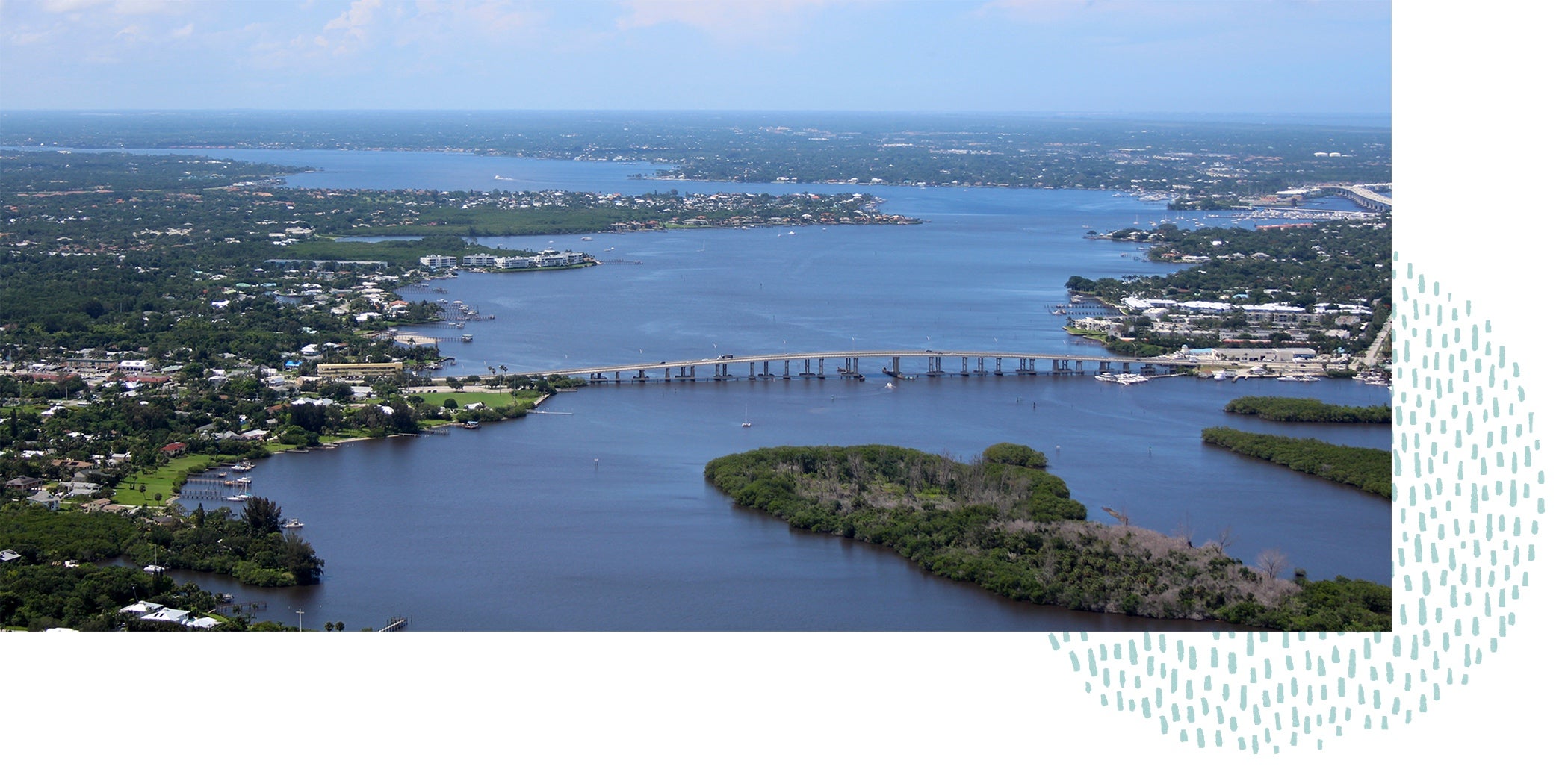
RESILIENCE CORNER
Looking for more information about Florida’s resilience community?
In this section, we will include helpful videos and links to external information that explain the many different causes and outcomes that are linked to climate change and how they impact our environment and our daily lives.
Learn more about statewide efforts and view helpful tools, fact sheets, and more by visiting these additional resources.
Clause de non-responsabilité
Pour la commodité des utilisateurs, ce site Web du comté de Martin utilise le service de traduction gratuit de Google. En cliquant sur le bouton "J'accepte", vous acceptez que les pages de ce site Web soient converties dans des langues autres que l'anglais. Le comté de Martin s'est efforcé d'assurer l'exactitude de la traduction. Cependant, aucune traduction automatique ou informatique n'est parfaite. Par exemple, la traduction n'est pas sensible au contexte et ne peut pas entièrement traduire le texte dans son sens complet. En outre, vous pouvez trouver des différences associées aux dialectes ou aux préférences régionales. De plus, vous ne pouvez pas traduire des graphiques avec du texte, des fichiers PDF ou des applications spéciales sur ce site Web. Le comté de Martin n'est pas responsable de la traduction fournie par Google. La version originale de ce site Web est disponible en anglais. En cas de divergence entre la version anglaise de ce site Web et la version traduite, la version anglaise prévaudra. En cliquant sur "J'accepte", vous acceptez que toute divergence dans la traduction ne soit pas contraignante et n'ait aucun effet juridique. Martin County ne peut garantir l'exactitude du texte converti et n'assume aucune responsabilité pouvant découler de l'utilisation ou de l'utilisation de la traduction fournie par Google. En cliquant sur "J'accepte", vous acceptez de renoncer à toute perte pouvant être causée au comté de Martin en vous fiant à la traduction fournie par Google.
Exención de responsabilidad
Para comodidad de los usuarios, este sitio web del condado de Martin utiliza el servicio gratuito de traducción de idiomas de Google. Al hacer clic en el botón "Acepto", acepta que las páginas de este sitio web se conviertan a otros idiomas además del inglés. El condado de Martin ha hecho todo lo posible para garantizar la precisión de la traducción. Sin embargo, ninguna traducción automática o por computadora es perfecta. Por ejemplo, la traducción no es sensible al contexto y no puede traducir completamente el texto a su significado completo. Además, puede encontrar diferencias asociadas con dialectos o preferencias regionales. Además, no puede traducir gráficos con texto, archivos PDF o aplicaciones especiales en este sitio web. El condado de Martin no es responsable de la traducción proporcionada por Google. La versión original de este sitio web está disponible en inglés. Si hay alguna discrepancia entre la versión en inglés de este sitio web y la versión traducida, la versión en inglés prevalecerá. Al hacer clic en "Acepto", acepta que cualquier discrepancia en la traducción no será vinculante y no tendrá ningún efecto legal. El condado de Martin no puede garantizar la precisión del texto convertido y no asume ninguna responsabilidad que pueda derivarse del uso o la confianza en la traducción proporcionada por Google. Al hacer clic en "Acepto", acepta renunciar a cualquier pérdida que pueda causarse al condado de Martin al confiar en la traducción proporcionada por Google.
Limit responsabilite nou
Pou konvenyans itilizatè yo, sitwèb Martin County sa a itilize sèvis tradiksyon lang gratis Google la. Lè w klike sou bouton "Mwen Aksepte", ou dakò ke paj yo nan sit entènèt sa a pral konvèti nan lang ki pa angle. Martin County te fè tout efò posiblite pou asire tradiksyon an presizyon. Sepandan, pa gen okenn tradiksyon machin oswa òdinatè ki pafè. Pa egzanp, tradiksyon an pa sansib nan kontèks epi li pa ka tradui tèks la nèt ak tout siyifikasyon li. Epitou, ou ka jwenn diferans ki asosye ak dyalèk oswa preferans rejyonal yo. Epitou, ou pa ka tradui grafik ak tèks, dosye PDF oswa aplikasyon espesyal sou sit entènèt sa a. Martin County pa responsab pou tradiksyon Google bay la. Vèsyon orijinal sitwèb sa a disponib nan lang angle. Si gen nenpòt diferans ant vèsyon angle a nan sit entènèt sa a ak vèsyon an tradui, vèsyon angle a pral pran priyorite. Lè w klike sou "Mwen dakò", ou dakò ke nenpòt dezakò nan tradiksyon an pa pral obligatwa epi yo pa pral gen okenn efè legal. Martin County pa ka garanti presizyon tèks konvèti a epi li pa sipoze okenn responsablite ki ka rive lè w sèvi ak oswa konte sou tradiksyon Google bay la. Lè w klike sou "Mwen dakò" ou dakò pou renonse nenpòt pèt ki ka lakòz Martin County lè w konte sou tradiksyon Google bay la.
免責聲明
為方便用戶,本馬丁縣網站使用谷歌的免費語言翻譯服務。單擊“我接受”按鈕,即表示您同意將本網站的頁面轉換為英語以外的語言。馬丁縣已盡一切努力確保翻譯的準確性。然而,沒有機器或計算機翻譯是完美的。例如,翻譯對上下文不敏感,無法將文本完全翻譯成其完整含義。此外,您可能會發現與方言或地區偏好相關的差異。此外,您不能翻譯帶有文本的圖形、PDF 文件或本網站上的特殊應用程序。馬丁縣不對 Google 提供的翻譯負責。本網站的原始版本是英文的。如果本網站的英文版本與翻譯版本之間存在任何差異,以英文版本為準。單擊“我同意”即表示您同意翻譯中的任何差異均不具有約束力,也不具有任何法律效力。 Martin County 無法保證轉換後文本的準確性,並且不承擔因使用或依賴 Google 提供的翻譯而產生的任何責任。點擊“我同意”即表示您同意放棄因依賴谷歌提供的翻譯而給馬丁縣造成的任何損失。
